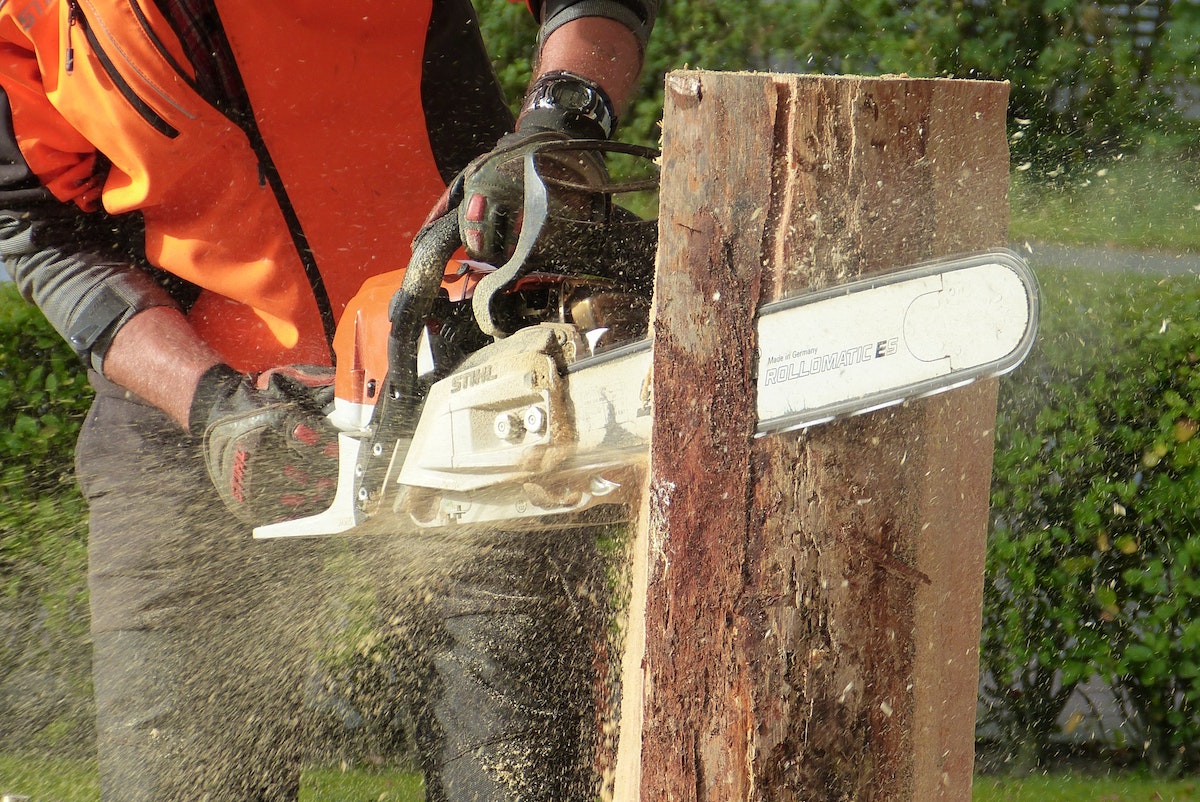Why does a chainsaw need to be sharp?
In order for your chainsaw to work effectively, the tool must be sharpened. An unsharpened blade puts more pressure and strain on you, the operator, and the machine, which can shorten it’s life. Dull blades can create damage and become unsafe.
How to sharpen a chainsaw with a chainsaw file
- Choose the correct file size: Chainsaw files are used to sharpen a chainsaw. Typically round files are used. The owner’s manual for your chainsaw should tell you the exact size file you will need to sharpen your blade.
- Remove power: Before you start to sharpen anything, make sure to remove the power source altogether. If it is a battery, take the battery all the way out. If it is powered through a cord, be sure the cord is unplugged. If your machine is gas-powered, be sure you don’t manually start the engine during the sharpening process.
- Clean: The chainsaw blade must be cleaned first to remove any dust, oil, and debris. The best way to do this is with a small air compressor, a brush, or a small towel. Make sure you are wearing cut-resistant gloves when handling your chainsaw.
- File and guide: Each file should include a guide that helps you maintain the correct angle when you sharpen a chainsaw. Each file and guide set will have specific instructions for setting them up. Make sure to follow them closely. Typically, the guide will have markings on it that will help you keep your file at the correct angle when sharpening your chainsaw. Beyond your user manual, another way to find the correct angle for your blade is to look at the tooth of your chainsaw. It should have a line close to the bottom that will show you the best angle to use on the guide.
- Tension: Test the tension of the chain by grabbing the top it towards the middle of the bar. Pull up and quickly release the chain. If the tension is right, the chain will snap back into position. If it doesn’t, it will need to be tightened.
- Secure the bar: Use a bench vise or stump vise to clasp the bar and keep it from moving.
- Start sharpening: Before starting, check again to ensure the chain is clean. Then mark where you will start sharpening the chain, so you don’t over-sharpen an area by going over it twice. Grab your file and point the tip of the file away from the engine. The file should be pushed from the inside toward the outside of the chain as you sharpen the blade. It should be held at a 90-degree angle to the guide bar and a 30-degree angle to the straight line of the chain. The chainsaw should always be set up so that you are sharpening the teeth by pushing the file away from your body. Also, make sure you can easily see through the angle guide.
- Move the chain forward: Manually move your chain forward by releasing the chain brake and rotating it forward.
- Reverse: Flip the chainsaw to the other direction in the vise and sharpen the rest of the teeth. Be sure to push from the inside to the outside.
How to sharpen a chainsaw with a power sharpener
- Materials: Your power or rotary sharpener should also include an angle guide and depth guide. Make sure to read the directions included.
- Overheat: Most of the rotary sharpener steps are similar to sharpening with a file, except with a rotary sharpener, be aware of the chainsaw teeth overheating. If the chainsaw is very dull, it may take a while to sharpen. So, be sure that the teeth never get too hot. You should always be able to touch the chainsaw teeth without burning yourself. If it gets too hot, the metal may warp.
Looking for a chainsaw parts or service. Chenango Supply has you covered. We are a STIHL dealer and can service any chainsaw. We also can replace the chains or sharpen a chainsaw. Our store is conveniently located off interstate 75 in Punta Gorda.






